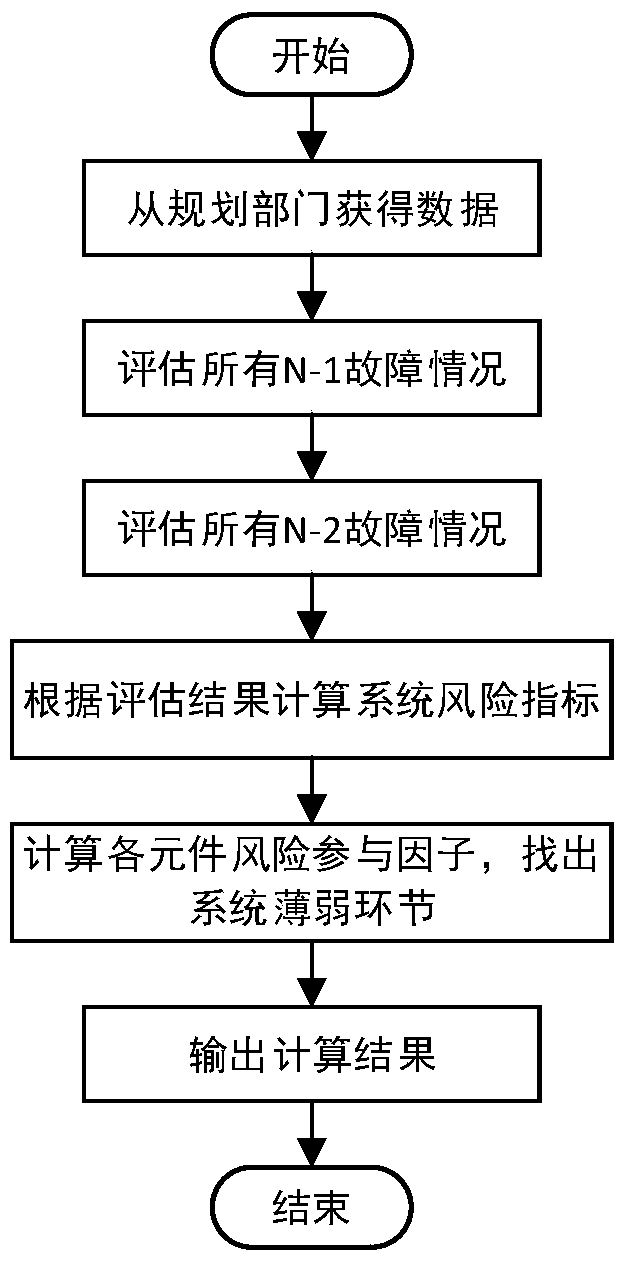A Risk and Vulnerability Assessment Method of Power Grid Considering Dual Fault Probability Characteristics
A weak link and failure probability technology, applied in data processing applications, instruments, calculations, etc., can solve problems such as no component probability modeling, multiple faults, and limited applications, so as to reduce the consumption of computing resources, reduce the number of system states, shorten Calculate the effect of time
- Summary
- Abstract
- Description
- Claims
- Application Information
AI Technical Summary
Problems solved by technology
Method used
Image
Examples
Embodiment Construction
[0036] The present invention will be further described below in conjunction with the accompanying drawings, but the content of the present invention is not limited thereto.
[0037] The components in the present invention include generators, transformers and transmission lines.
[0038] When applying the method proposed by the present invention, it is necessary to obtain relevant data from the grid planning department first. System basic technical data, system operation constraints data, and component reliability data obtained from the power grid planning department;
[0039] The basic technical data of the system include node data, transmission line data, transformer data, load data and generator data;
[0040] The system operation constraints data include the upper and lower limits of the output of each generating set, the upper and lower limits of the reactive power output of the reactive power source, the upper and lower limits of the node voltage, and the upper and lower...
PUM
 Login to View More
Login to View More Abstract
Description
Claims
Application Information
 Login to View More
Login to View More - R&D
- Intellectual Property
- Life Sciences
- Materials
- Tech Scout
- Unparalleled Data Quality
- Higher Quality Content
- 60% Fewer Hallucinations
Browse by: Latest US Patents, China's latest patents, Technical Efficacy Thesaurus, Application Domain, Technology Topic, Popular Technical Reports.
© 2025 PatSnap. All rights reserved.Legal|Privacy policy|Modern Slavery Act Transparency Statement|Sitemap|About US| Contact US: help@patsnap.com

